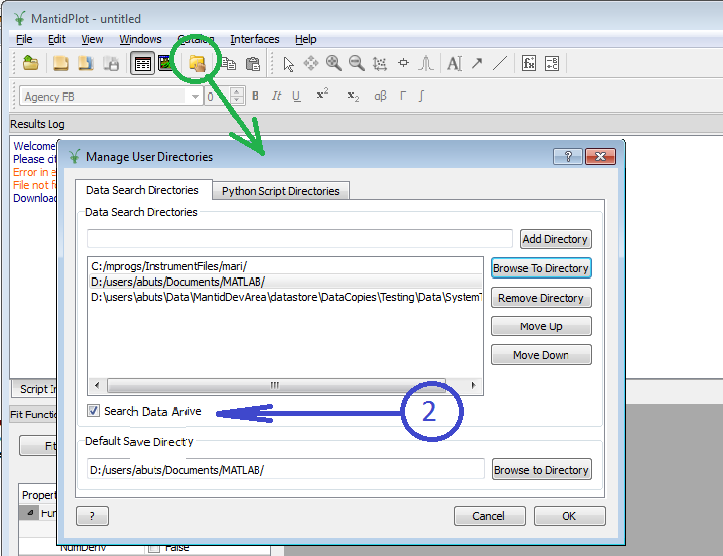Instrument parameters and Instrument definitions
Instrument and experiment specific parameters
To reduce experimental data, user needs access to Instrument Definition Files (IDF) defining main configuration of the instrument and parameters of the script, which processes the data, and the range of auxiliary files such as detector calibration file, defining actual neutronic positions of detectors in an experiment, map files (extension .map), defining the detector grouping, mask files (extension .msk) defining the lists of detectors which should not be processed and in less extend other files (.par, .phx, .nxs etc.)
On isiscompute servers and instrument cabin computers these files can be accessed at:
/usr/local/mprogs/InstrumentFiles/[INSTRUMENT_NAME]
folder where the INSTRUMENT_NAME should be replaced by one out of [mari,maps,merlin,let] values list. Some instrument scientists create symbolic links (usually on Desktop) providing quick access to the files relevant for a particular instrument.
Automatic configuration scripts running on isiscompue servers automatically add appropriate folder, corresponding to the instrument to Mantid data search path (see picture below). This make the data, stored in the folder available to the reduction scripts and places the link to the instrument files to the Nomachine desktop.
The path to the requested parameters on this picture is set to mari instrument parameter's folder by the first row of the data search path folders list.
Currently instrument parameter are placed under SVN source control with server at:
https://svn.isis.rl.ac.uk/InstrumentFiles/trunk
Everybody can read data from this server and some instrument scientists have write access to it. Contact Freddie Akeroyd if you believe you need write access to the server. On a Unix machine, an authorized person can added file to the source control and send it to the server by placing the file into appropriate folder and issuing the following commands:
svn add "file_name" svn commit -m" message describing purpose of the file"
Tortoise SVN can be installed on a Windows machine to provide simple and straightforward GUI to control svn operations.
Simple scripts are running each hour on instrument cabin machines and isiscompue servers pulling data from SVN server, so the file added to svn server on any machine is ready to be used everywhere within an hour. The result of their operations is currently mailed to main instrument machine user (mari, let,maps or merlin) so you can see results of these scripts work logging in as this user and typing
command. The conservative logs are currently reviewed and regularly cleared up manually. On isiscompue servers only the last results are logged to:
/var/log/UpdateSVN.log.
available on ndmlnx01 node only.
The SVN command:
svn update
can be issued from svn folder of a particular machine (always /usr/local/mprogs/InstrumentFiles/ but may have additional references on particular machines) to get immediate access to a new data, but on isiscompue servers this command needs administrative access.
Five years ago it was the most convenient way to provide data synchronization between various computers, but other methods are available now. Group needs to discuss if this is still appropriate way of sharing data these days.
Instrument Definition Files
Instrument definition files, which describe the the instrument configuration and main parameters of the reduction are part of Mantid and are usually located in /opt/Mantid/instrument folder on Unix or MantidInstallationFolder\instrument folder (c:\MantidInstall\instrument by default) on Windows.
Newer version of these files produced after Mantid release are automatically retrieved by Matnid at startup into ~/.mantid/instrument on Unix or c:\Users\USERACCOUNT_FOLDER\AppData\Roaming\mantidproject\mantid\instrument folder on Windows. Such files, if present for a particular instrument override files in Mantid installation directory.
INSTRUMENT_NAME_Parameters.xml
file provide comprehensive list and description of almost all parameters used by the data reduction script and file
INSTRUMENT_NAME_Definition.xml
describes all details of the instrument geometry. For further details of the file format and their contents user should look at Mantid IDF description pages.
Actual default parameters for inelastic data reduction scripts, which are used by Mantid reduction script can also be accessed on the web from Mantid Git repository:
